Last month, we wrote about the dos and don’ts of putting together your makeup portfolio. One of the most important points, of course, is to make sure you show great makeup photos! You want people to see your work at its best!
At QC Makeup Academy, students submit pictures of their work for their tutor to grade. Surprisingly, some students don’t realize they need to submit good pictures for their tutor to see (and grade) their work!
Over the years, we’ve seen students submit tiny images, black and white shots, edited photos, dark-as-night shots, and other faux-pas that made it impossible for their tutor to evaluate the makeup.
With that in mind, we thought we’d share some tips on how to take good makeup photos, both for your portfolio AND for your makeup coursework!
No surprise, lighting is the #1 issue with a lot of makeup photos. You’ve spent a lot of time on your makeup, and you want it to look its best in your photographs.
Avoid harsh light. Don’t shine a light bulb onto the subject’s face: you’ll get a glare in the photo and the intensity of the light will diffuse the color you’ve worked so hard on.
Natural light is by far your best choice, but avoid direct sunlight as it can have a similar effect as a bright light bulb. Instead, try morning or evening light, a cloudy day (if you’re outside), or simply an indoor shot in a room with a large window that lets in a fair amount of indirect sunlight.
If you’re taking a shot indoors, you can also use an umbrella or piece of white cardboard to diffuse light from a fluorescent or incandescent light bulb.
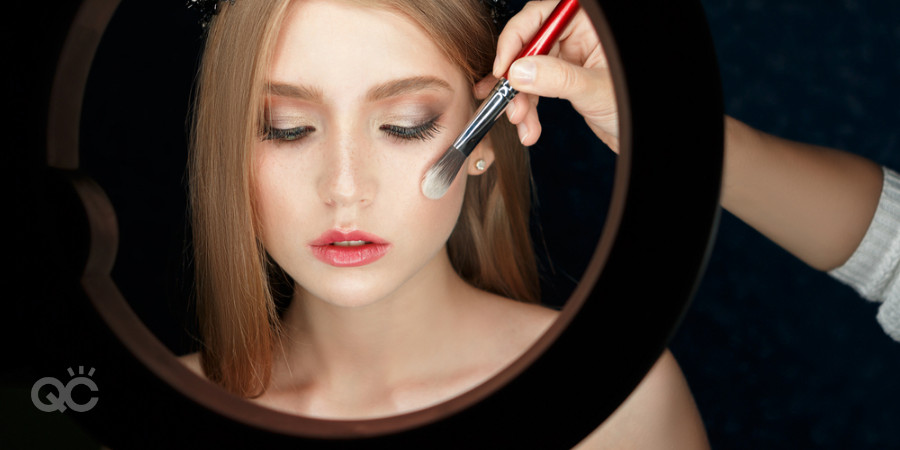
Note: A flash on a camera is the equivalent of shining an extremely bright light right in your face as the picture is captured. Try to avoid using a flash when photographing makeup.
Background
When taking a picture of a model, you want the audience to see her makeup first. That’s difficult if she is photographed in front of a busy background: traffic, colorful flowers, complex patterns, etc. should be avoided. Try to position the subject in front of a neutral background that complements the makeup.
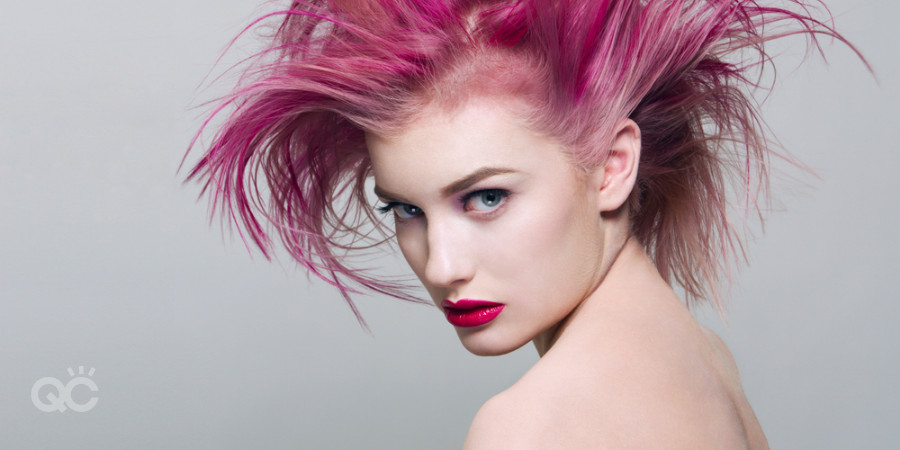
Angles
For your course work, the angle of the shot is less important. As long as your tutor can see the makeup, you’re in good shape. But for your portfolio, you’ll want beautiful shots at interesting angles. Don’t just take head-on photos. Try having your model lookup, to the side, have them smile, then keep a serious look on their face. Don’t be afraid to experiment with your camera’s “burst mode”. Sometimes just having fun with your model and a camera will result in some spectacular shots!
Photographing eyes
Many artists make the mistake of having a model shut her eyes to take a photo of her eye makeup. This often results in wrinkles or other strange shadows on the model’s face. Instead, have the model look down. It will showcase the entire eyelid while keeping a very natural look to the shot.
Focus
Are you trying to photograph an eye, lips, or an entire face?
We’ve previously discussed the importance of featuring individual pieces in your portfolio. If you’re showcasing a smoky eye, for example, you can focus on that one area and don’t have to photograph the model’s entire face.
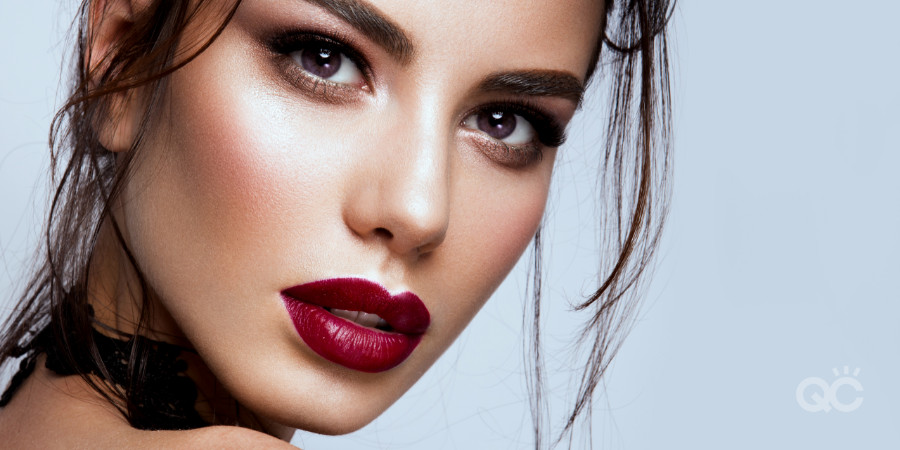
When photographing one particular element up close, use the “macro” setting on your camera. This setting is usually depicted as a flower icon in your camera’s menu, and is made to take up-close shots while featuring specific details.
If, however, you’re showcasing a complete look (such as bridal makeup, for example) then you’ll want to make sure you get the model’s entire face in the shot.
Either way, the most important part of photographing makeup is to focus on the subject, not the background. Most cameras will have an auto-focus—you just need to know how to use it.
Keep it steady!
To get a good shot, your camera needs to be stable. If you have a tripod, use it! If you’re holding your camera in your hands, you can steady yourself by at least sitting your elbows on a steady surface like a table or the back of a chair.
Resolution
Your camera’s resolution should be set at no lower than “5M” (or “2592 x 1944”). This will give you a large enough photograph to feature the makeup in detail.
Editing
Many artists will use photo editing software to make their photos look their best. You should really try to avoid this for makeup photos.
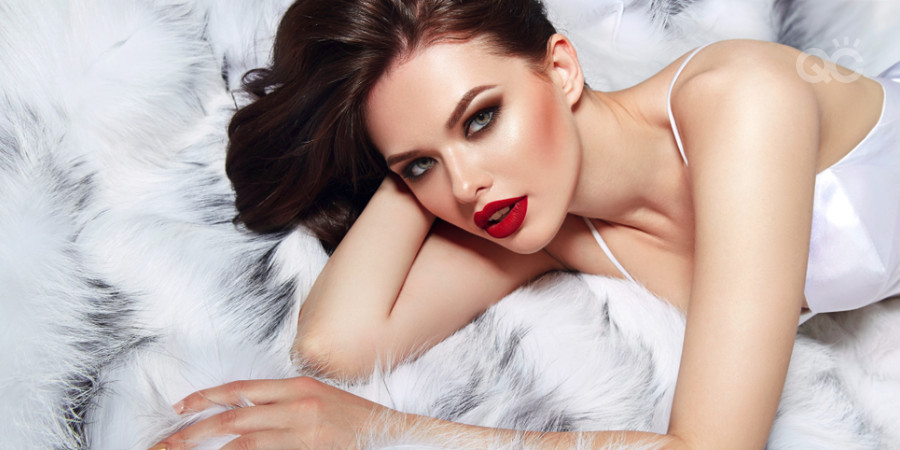
Use editing software to crop out photos if necessary, but avoid zooming, teeth whitening, or any other filter: the photo will end up looking very unnatural and your audience might question just how much the image was altered.
Remember: the point of a portfolio is to show your audience that you know your makeup… not to show them how good you are at editing photos!
Get to know your camera. Take a few hundred shots using all the different settings and see what you like best. This changes from one camera to the other!
You don’t need a thousand-dollar camera to take great shots. Any point-and-shoot digital camera can take good pictures… you just might need to work a little harder at finding the right settings.
Other Important Points
- Know the difference between optical zoom and digital zoom! A “digital zoom” is really a “fake zoom” and can reduce the clarity of your photos. Try to avoid it for makeup shots.
- If you’re emailing a photo, attach the original photo to your email. Don’t just copy/paste the image into your email: this greatly reduces the quality and clarity of the shot.
- The same goes with uploading a photo: upload the original file—don’t paste the image into a word editing software first.
- Once you’ve taken your pictures, review them on your camera right away. Zoom in as far as you can to ensure your images aren’t blurry. If they aren’t crystal clear, take some more shots!
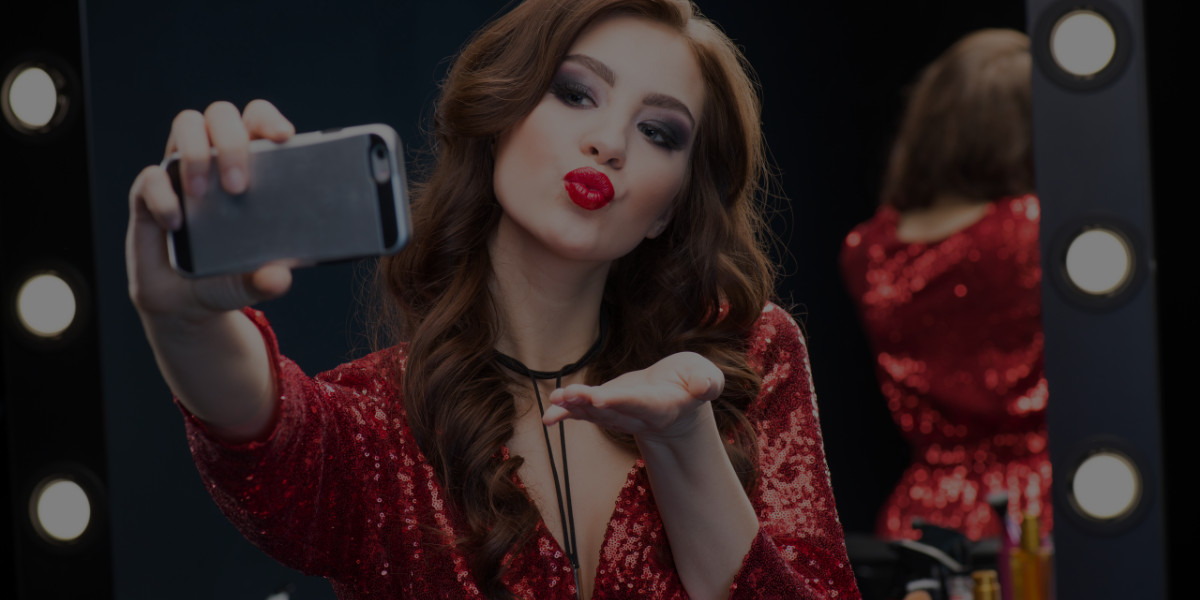
What do you do if the only option is your smart phone??
Thanks for commenting Amanda!
We do have many students who are able to take beautiful photos of their makeup artistry with their smart phones. It’s all about finding the proper lighting. A big weakness of phone cameras is their inability to take good photos in low light. Make sure your subject is facing the light source and that you’re shooting at a time of day when there is a lot of natural light (turn that flash off!). This might take some trial and error, but it will be worth the effort in the end. Good luck!
Thank you for your reply Julia, that is great to know because taking photos with a large camera is rather difficult to do unless your doing someone else’s makeup. I’m just curious what to do when the weather is very cloudy and raining, how to get better lighting??
Hi Amanda!
Sorry it took so long to reply 🙂
We discuss it a little within the article. Taking photos indoors is okay, just diffuse the light a little. So instead of shining a lightbulb right at yourself (or your model), have a light shine away from you and onto a white surface such as a photography umbrella or a white piece of cardboard (cheaper alternative).
I hope this helps!
-Mireille
Is it okay to have the same few people as your models for your portfolio when starting out ?
Hi Abi!
Yes you can definitely use the same model in your portfolio. Nothing wrong with that, especially if you’re just starting out! If you’d like to learn more about building your portfolio, check out this post: Portfolio 101.
Hope this helps!
Cheers,
Mireille
Hi Mireille!
Your article was a great help.
Dslrs are so steep and to afford one when one is setting up business it is very disheartening. I am trying to make my Samsung Galaxy smartphone do most of my job, but as you mentioned, its not good at all in poor lighting. I am using a led light of 4500K, for my makeup. My mistake was buying the 18w and not am struggling to diffuse it as it is very harsh.
Any suggestions would be a great help.
Thanks Dawn
Hi Dawn!
It can be tough to get good photos with any phone. Throw in the wrong light source, and it’s almost impossible, as you’ve discovered! Have you tried taking your makeup photos outside under natural sunlight? That might be your best bet! Otherwise, probably a different, softer light source would help.
Keep in mind, you don’t need a DSLR for good makeup photos. You can get a decent-quality “point and shoot” camera that will take much better pictures than your phone.
Good Luck!
Hi, thank you for this. You mentioned that ‘you don’t need a DSLR for good makeup photos. You can get a decent-quality “point and shoot” camera that will take much better pictures than your phone’ please can you recommend good affordable “point and shoot” cameras? Thank you
Hi, this was a helpful post.
Will there be an online class on how to select a lighting tool (ring light or beauty box) for a small studio?
Thank you in advance,
MR
So I agree with this about not editing photos and changing the colour and lighting of makeup as it’s just not what the client will see at the end of their appointment so they will be getting the wrong idea of the work you do which isn’t fair on them or you. Also natural lighting is so much better then artificial as that just blows the makeup out and makes you go heavier than you actually need which isn’t great when the client is just going to go outside. I always try to have a natural background unless the background will enhance the makeup for example if your doing a spooky special effects makeup then shooting it in the woods that would make it look amazing
I really like how this article outlines how accessible making a good makeup photo is for someone who is not a photographer. Especially with how good our smartphones are getting nowadays, it makes me feel comfortable knowing that I can produce good quality photos if I use my resources correctly. I also agree with not editing photos, because you’re right, we don’t to mislead our clients with unrealistic expectations. I guess I also didn’t realize how important it is to upload a picture rather than copying and pasting! That is something I am going to be doing for now on; I want to make sure I’m sending the highest resolution picture I can! 🙂
Thanks for the great tips, Mireille!
This is awesome, Jordan! It’s amazing how much the smallest decisions can have the biggest impact, isn’t it? As a professional makeup artist, your portfolio is the physical embodiment of your skills and past experience. Knowing how to best represent it to clients is a critical part of your career, as it’ll have a HUGE affect on the number of bookings you can get. We’re glad that you learned some helpful tips and tricks from this article. Thanks so much for commenting! xx
All the best,
The QC Team